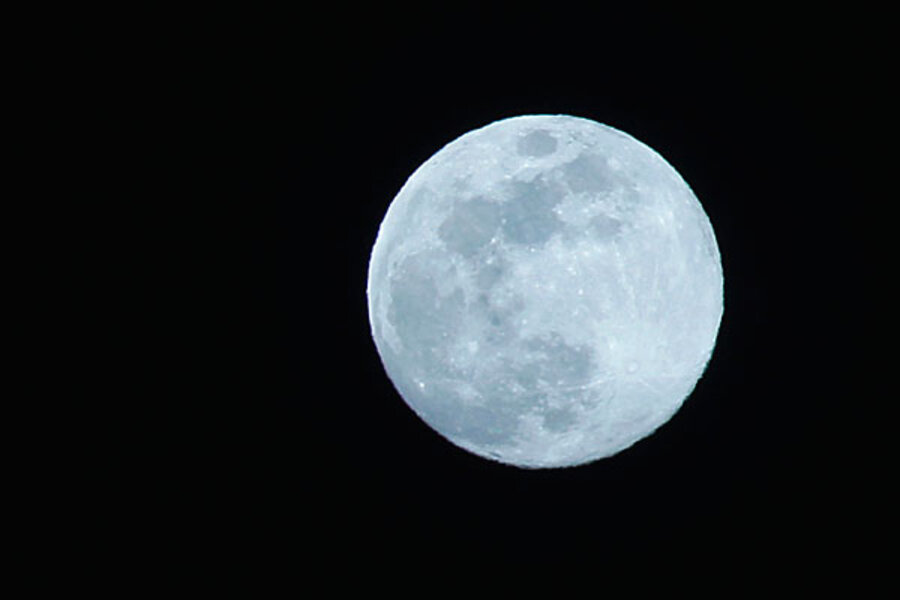Blue moon: Two chances to see this rare event
Loading...
| Los Angeles
The saying “once in a blue moon” refers to something that’s exceedingly rare. But in Los Angeles you’ll have two chances to see this lunar occurrence Friday, when a so-called blue moon comes into view.
The first opportunity will be Friday morning — yes, the morning — as the blue moon is setting for the day, said Anthony Cook, astronomical observer at Griffith Observatory. Look for the early-morning blue moon between 6:30 and 7 a.m. PDT, he said.
Later in the day, you’ll get a second chance to see the blue moon, when it rises at 7:13 p.m. PDT.
So what is a blue moon? It’s the second full moon within one calendar month.
RECOMMENDED: Are you scientifically literate? Take the quiz
The moon isn’t actually blue. And it might even take on an orange hue as it starts to rise in the sky, Cook said. If anything, the Friday night moon will most likely appear an especially brilliant white.
“There’s nothing unusual really about the moon itself,” Cook said. “It will look like the usual moon.”
The genesis of the term “blue moon” is unclear.
“It’s not really certain” where it came from, Cook said. “Why ‘blue’ was chosen isn’t really known for sure.”
There are, on some occasions, atmospheric conditions that could produce a blue-looking moon, he said. And it’s believed that such conditions sometimes took place at the same time as the second full moon, perhaps leading to the moniker.
A blue moon occurs because the average lunar cycle is 28 to 29 days long. That’s why most months see just a single full moon.
The average month, however, is about 30 days long. “As a result, the lunar cycle gets out of phase with the calendar,” Cook said. “If you have a full moon right at the beginning of the month, you can get one at the end of the month.”
The last time a blue moon occurred was December 2009. “The next time will be on July 31, 2015,” Cook said.
He added that there is another definition of “blue moon,” one that comes from the Farmer’s Almanac. When four full moons occur during the course of a single season, the third of those is referred to as the blue moon, Cook said.
“That kind of full moon is just as rare as a second full moon in a month,” Cook said. “It also occurs every two or roughly three years.” The next seasonal blue moon will occur in August 2013.
RECOMMENDED: Are you scientifically literate? Take the quiz
———
©2012 Los Angeles Times
Visit the Los Angeles Times at www.latimes.com







